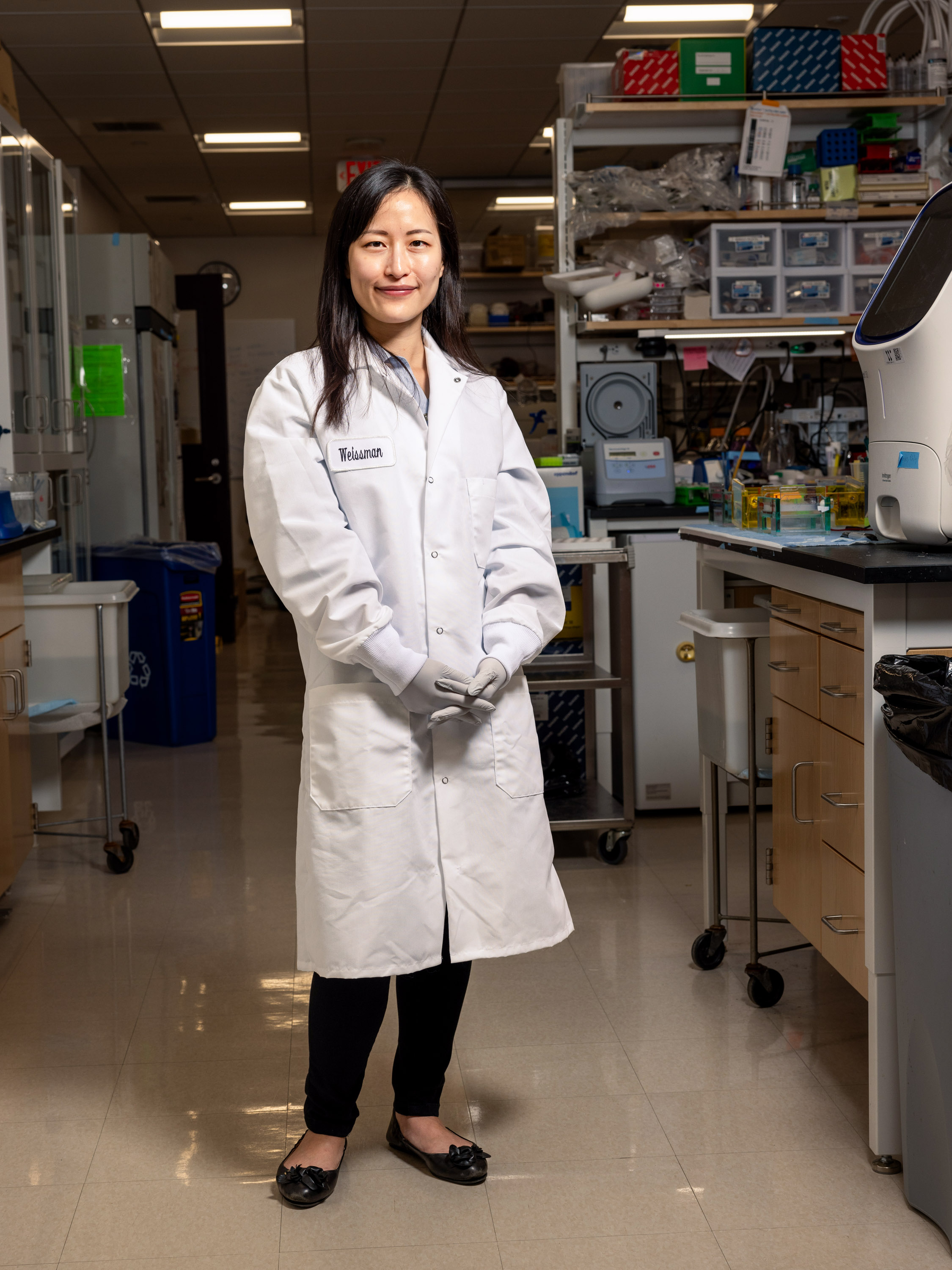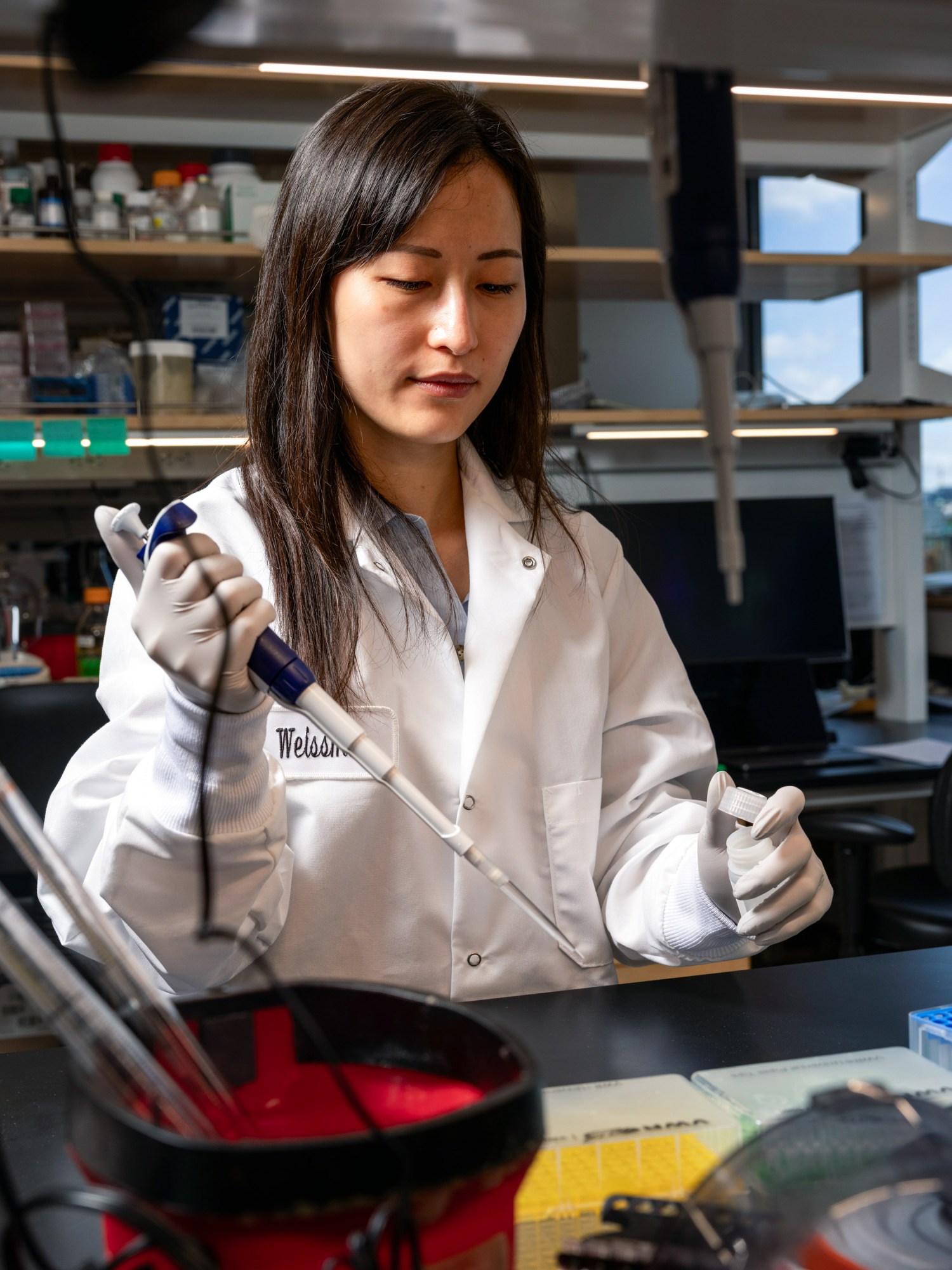She was a semi-pro Go player but learned that biology is even harder
Julia Joung created an “atlas” to help scientists see how specific proteins shape cells into muscle, neurons, and more.

Julia Joung is one of MIT Technology Review’s 2023 Innovators Under 35.
When an AI beat one of the world’s best Go players in 2017, Julia Joung felt relief. She’d spent her childhood in Taiwan mastering the ancient game and once aspired to become a professional player, representing her country.
“I felt like part of the mystery of Go was that it was this unsolvable problem. You could get better and better and there was just no end to it,” says Joung, 32.
But by the time Google’s AlphaGo cracked the game, Joung had already found her way to a harder problem, At At Stanford University, during her undergraduate research in a neuroscience lab, she observed unusual behavior in brain cells called astrocytes. “We couldn’t figure it out,” she says.
Biology, she realized, was harder than Go. And it was her new fascination.
Her next stop was the Broad Institute, in Cambridge, Massachusetts, and the lab of gene-editing expert Feng Zhang. She arrived in the early days of the excitement over the gene-editing tool CRISPR. There, Joung dove into “genome-scale screening,” or using tools such as CRISPR to alter each of the 20,000 genes in the human genome—and then watching to see what happens.
Such genetic screening, often carried out on stem cells, is a top priority for data-driven labs seeking to explore biology’s logic from a wide angle.
Joung wanted to try screening in actual brain cells, such as astrocytes. In theory, stem cells can be coaxed to develop into any type of cell. In practice, though, many types are hard—even impossible—to generate in the lab.
Proteins called transcription factors can determine what cells decide to become. But which ones? There are more than 1,500 factors in our bodies.
Initially, Joung found a single factor that would turn stem cells into nervous system cells. But her research evolved into a larger project. Why not add every single transcription factor to stem cells and measure the effect each factor had on how those cells behaved?

The result of her survey, published in January, is an “atlas” of how individual transcription factors affect the identity of stem cells. Joung says she has seen neurons, beating heart muscle, and placenta cells appear under her microscope. But the ultimate goal, she says, “is to be able to make any cell type, and in a very controlled way.”
Supplies of specific cells could be useful for testing drugs or new types of therapies. Other scientists studying transcription factors hope to find combinations that will form human eggs in the lab or even provide the key to rejuvenation treatments. “We aren’t just generating lists when we screen. It’s a list with a purpose,” says Joung. “There’s always that end goal.”
Genetic screening is “big” science—Joung’s PhD work relied on 17 collaborators. And it’s expensive, too. Just purchasing all the genes she needed cost $550,000, money Joung was able to raise from Broad’s Stanley Center for Psychiatric Research, among others.
But the physical scale of the work is often microscopic. The genes arrive as ephemera in plastic tubes. Most of the action happens in cell-culture rooms, where trainees in white coats work elbow to elbow in front of special workbenches, covered with plexiglass. Eventually, Joung’s experiment involved over a million cells. Yet all of these cells would, together, be smaller than a single fruit fly.
Joung hasn’t gotten around to answering the question about those astrocytes that piqued her curiosity as an undergrad. And she admits it’s not her top priority anymore. Now, as a postdoc at the Whitehead Institute, also in Cambridge, she’s using her screening approach to dig into fundamental questions about how proteins are made inside cells.
“Julia is a technically brilliant and conceptually bold scientist who is building tools that provide unique and comprehensive views of complex processes,” says Jonathan Weissman, who leads the Whitehead lab in which Joung now works.
And to her, there’s still plenty of technology to develop. “You start with a question and you realize you can’t answer that question with the existing tools. So you go back and make the tools,” she says. “I do think [my] fascination with biology is the never-ending depth of what you can find.”
Julia Joung is one of MIT Technology Review’s 2023 Innovators Under 35. Meet the rest of this year’s honorees.
Deep Dive
Biotechnology and health
The Biggest Questions: What is death?
New neuroscience is challenging our understanding of the dying process—bringing opportunities for the living.
I received the new gene-editing drug for sickle-cell disease. It changed my life.
As a patient enrolled in a clinical trial for Vertex’s new treatment, I was among the first to experience CRISPR’s transformative effects.
The lucky break behind the first CRISPR treatment
Gene editing for sickle-cell is here. This is how researchers knew what DNA to change.
Medical microrobots that can travel inside your body are (still) on their way
Microrobots released into the body could bust up clots, deliver cancer drugs, and even guide listless sperm to their target.
Stay connected
Get the latest updates from
MIT Technology Review
Discover special offers, top stories, upcoming events, and more.